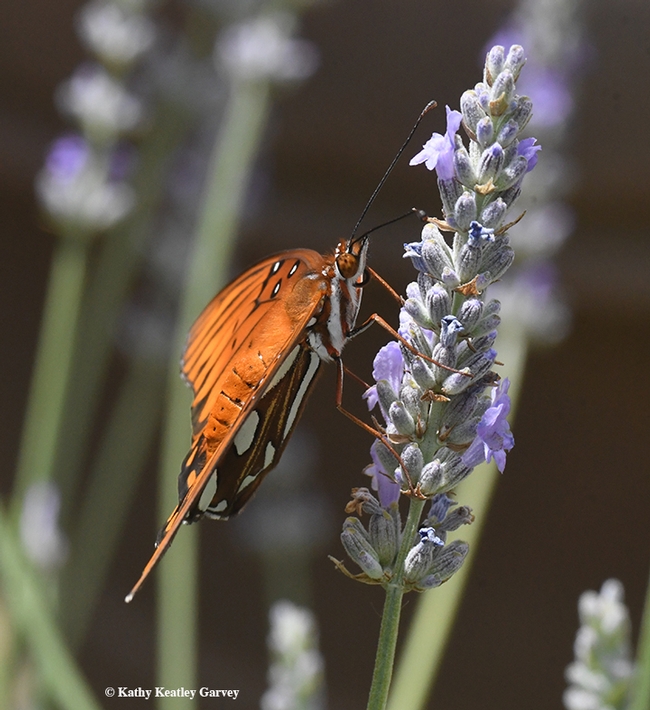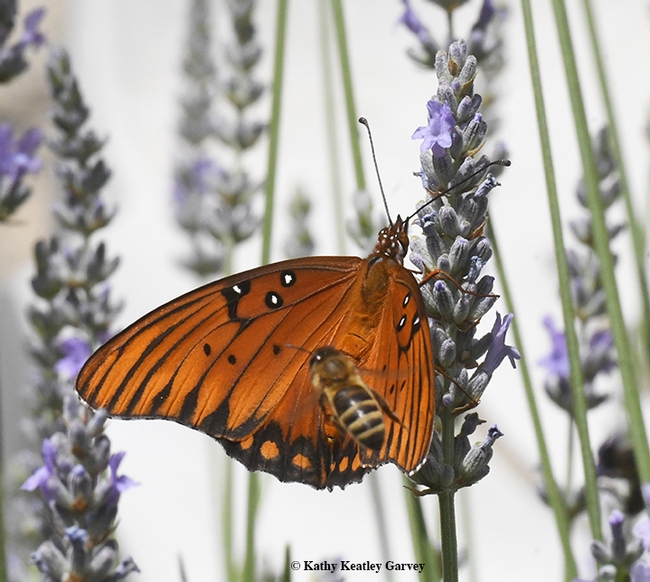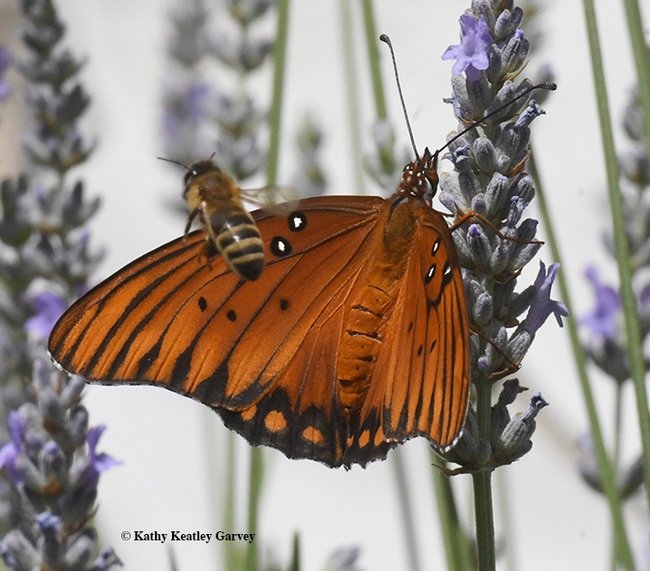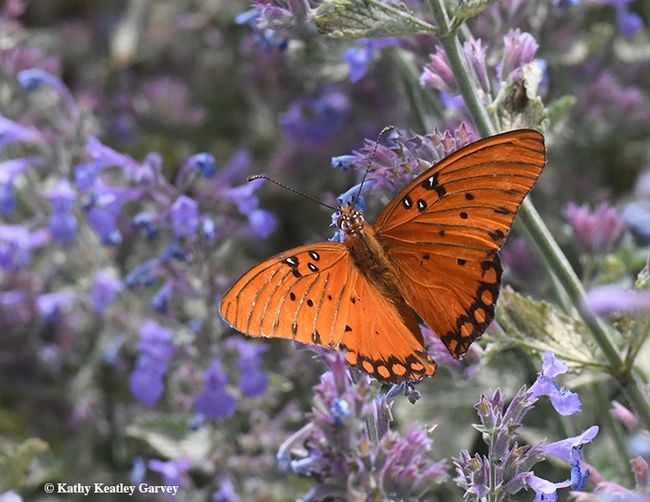So here's this Gulf Fritillary (Agraulis vanillae) clinging to a lavender stem in our pollinator garden.
It is all alone--for a little white.
Then here come honey bees seeking to forage on the lavender, too.
One bee buzzes next to the butterfly's wing. Then it soars up and over.
Too much traffic for this butterfly. It moves to the nearby catmint patch.
The showy butterfly, a brilliant orange-reddish masterpiece with silver-spangled underwings, first appeared in California in the vicinity of San Diego in the 1870s, according to noted butterfly researcher Art Shapiro, professor of evolution and ecology at the University of California, Davis. He's been monitoring the butterfly populations of central California since 1972 and maintains this website.
From San Diego, “it spread through Southern California in urban settings and was first recorded in the Bay Area about 1908," says Shapiro. "It became a persistent breeding resident in the East and South Bay in the 1950s and has been there since.”
Shapiro says it “apparently bred in the Sacramento area and possibly in Davis in the 1960s, becoming extinct in the early 1970s, then recolonizing again throughout the area since 2000.”
The Gulf Frit's host plant is the passionflower vine (Passiflora). Plant it and they will come. Plant some lavender and catmint, too, for food sources. You'll be rewarded by the joy of seeing these beautiful masterpieces fluttering into your yard.
Attached Images:

A Gulf Fritillary (Agraulis vanillae) clinging to a lavender stem in Vacaville, Calif. (Photo by Kathy Keatley Garvey)

A honey bee, seeking nectar from a lavender, buzzes a Gulf Fritillary, Agraulis vanillae. (Photo by Kathy Keatley Garvey)

It's up and over and away for the honey bee. Can't you see as big a thing as me? (Photo by Kathy Keatley Garvey)

Gulf Fritillary heads for the nearby catmint patch. (Photo by Kathy Keatley Garvey)